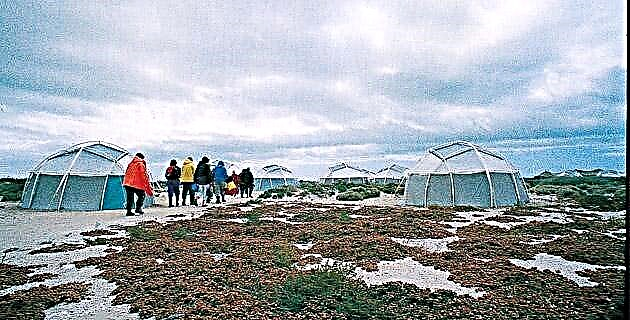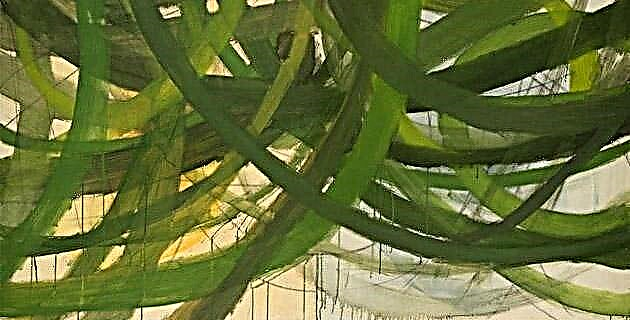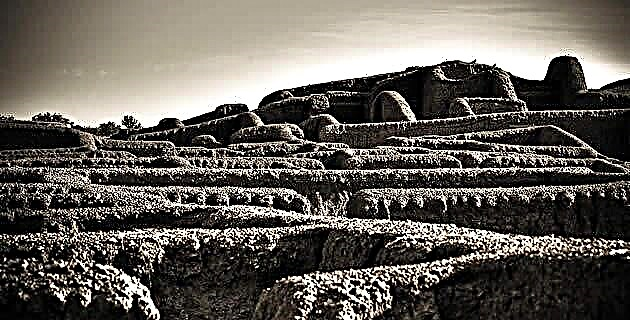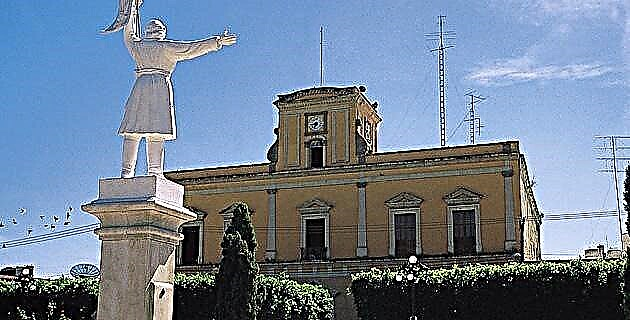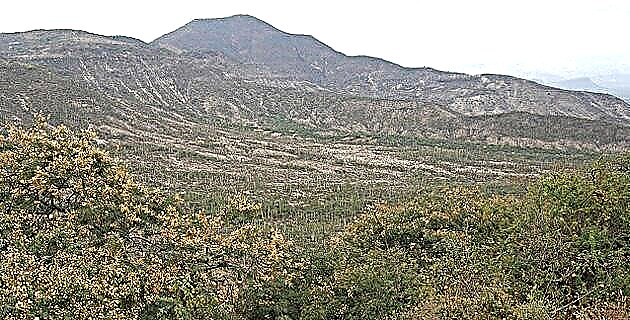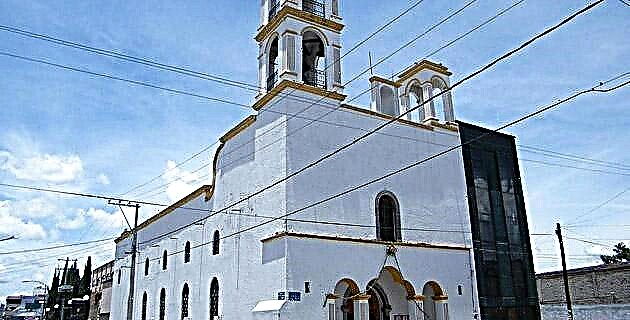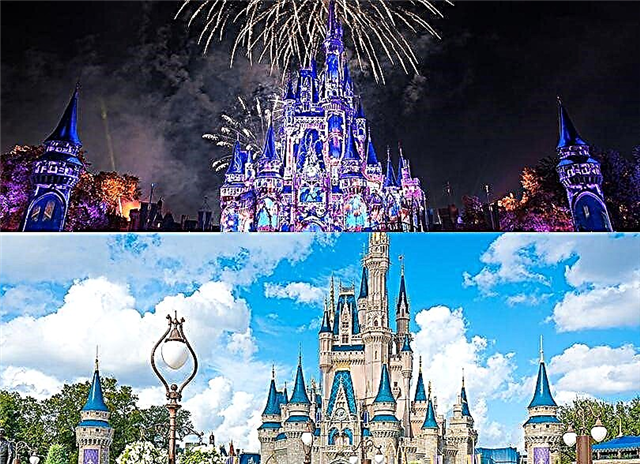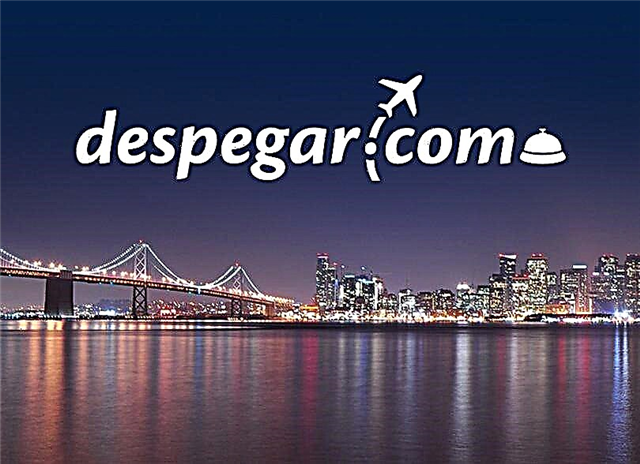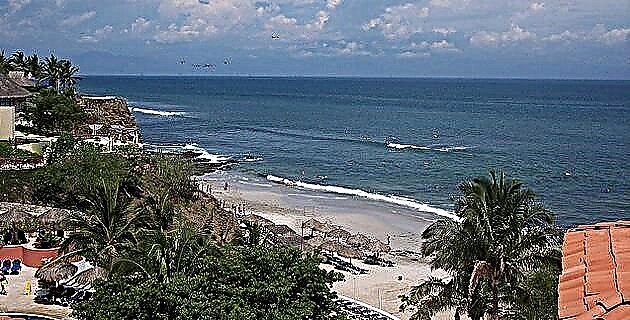
160 kilometers of coastline await you, between the Port of San Blas and the Ameca River, in the Bay of Banderas, so that you can enjoy the sun and the magnificent landscapes offered by this tourist corridor that aims to promote the development of the region and compete solidly in the international tourism market.
Carmen and José Enrique welcomed us to their home, which, more than a hotel, is a life project. We had left Guadalajara very early and after three hours of travel, we were in Chacala, the closest beach to this city. We decided to stay in this bay, because geographically it is the middle part of the Riviera Nayarita, and the Hotel Majahua was the one that most attracted us.
A gallery town
Majahua is a place to live with nature, meditate, relax the body, mind and spirit, and enjoy art and good cuisine. The hotel is built on the flank of a hill of exuberant vegetation and its architecture harmoniously integrates with the environment that surrounds it and the uneven terrain.
To get to it, we took a path through the jungle and after five minutes we were already with our hosts. José Enrique is an engineer, he came to Chacala in 1984 looking for a peaceful place by the sea where he could make a concept of lodging a reality and develop social work. In 1995 the construction of Majahua began and simultaneously began with the name of "Techos de México", a community project with the fishermen of Chacala to obtain donations and finance the construction of a second floor in their homes, destined to host tourists.
Carmen is a cultural promoter and this is the reason that Chacala has become a "gallery town". Photographic exhibitions printed on large-format canvas are exhibited on the beach, in the arches and especially in the hotel gardens - what is called "the jungle gallery".
In the comfort of the jungle
We decided to spend the whole morning enjoying the hotel. Despite having only six rooms, the land area of Majahua is one and a half hectares. The suites are spacious and all have their own terrace. The garden is immense and there are plenty of seating areas and hammocks.
At that time it was difficult to pin down which was our favorite place; the restaurant terrace, from where you can enjoy the sea; the yoga and meditation area; or the spa, which is reached via hanging bridges. Later we would enjoy each of them in a special way. We toured "the gallery of the jungle", whose rooms are the sidewalks and terraces facing the sea.
There Flight is exhibited, 21 photographs by Fulvio Eccardi on the birds of Mexico, which in this way transports the quetzal, the osprey, the jabirú stork and the blue-footed booby bird –among other species- to the Chacala jungle. And the theme of the exhibition is not by chance, since the bay is a natural bird observatory. At lunchtime we decided to go down to the town where there are a good number of palapas that compete with each other to offer the best of local gastronomy.
The heavenly bay
After eating we dedicated ourselves to getting to know the bay. Chacala has a population of approximately 500 inhabitants, most of them dedicated to fishing and, for a decade, to tourism. The bay was discovered in 1524 by the Spanish explorer Francisco Cortés de Buena Ventura, nephew of Hernán Cortés. We could not avoid the temptation to walk barefoot along the fine golden sand beach until we reached the natural breakwaters and the lighthouse.
Further on is Chacalilla, a private beach with calm emerald green waters, ideal for diving and kayaking. Unable to advance further, we explored the breakwaters looking for remains of petroglyphs, common in the area. 30 minutes from Chacala, in the direction of Puerto Vallarta, is the Alta Vista archaeological zone, where 56 petroglyphs are preserved on the banks of a stream whose age cannot be precisely specified. In addition to its historical value, this site is currently a sacred site where the Huichols go to leave their offerings and perform ceremonies.
Retracing our steps, we took shelter from the sun under the shade of palm trees and mango and banana trees. We spent the evening twilight lying on the sand watching the sunset, gently gliding over the sea, behind the fishing boats. On our return to the hotel a skewer of shrimp marinated in oyster sauce awaited us.
Matachén Bay
With the song of the birds, the murmur of the sea and a sun that filtered through the foliage of our terrace, we woke up the next day. We just have coffee and go immediately to San Blas. The plan was to get to the port and from there return again, stopping at the main beaches of the Bay of Matachén. We stopped for breakfast in Aticama, 15 kilometers before reaching San Blas, as we had been warned that this place is an important producer of stone oysters. It was during colonial times a refuge for pirate ships and buccaneers that ravaged the Pacific coast.
Upon reaching San Blas, we went up to Cerro de Basilio to appreciate from the old Contaduría building, an incomparable view of the historic port from which the Spanish ships departed to conquer the Californias. To cool off from the increasing heat, we took refuge in palapas on the beach, famous for their wide variety of fish and seafood.
At the port exit, we board the Conchal to take an excursion through the mangroves of La Tobara and the crocodile. El Borrego and Las Islitas are the closest beaches to the port, but we didn't stop our march until we reached Los Cocos, which, as its name implies, is covered by palm trees of water and oil coconuts. The slope is gentle and the swell is constant, which makes surfing easier.
At the next beach, Miramar, we arrived with every intention of having a feast. The restaurants in this place have a well-earned reputation as one of the best in the region. This is how we could verify it. By our table they paraded, in order of appearance, aguachile shrimp, shrimp cockroaches -our favorites- and the essential sarandeado fish. We did not have much time to walk the beach, but we were able to observe its extraordinary landscape.
We were in a hurry to get to Platanitos, where we had been recommended to see the sunset. It is a wide beach that is in the open sea, where sea turtles arrive to spawn. As they had not anticipated, the sunset was extraordinary and intoxicated by that magic of nature, we returned to Chacala.
Closing with a flourish
Despite the birds, the waves and the sun, the next day we did not wake up so early, and now we do enjoy breakfast and the hotel terrace. Our path would take us to the south of the Riviera Nayarit and as the day before, we would begin to return from the most distant point. It took us two hours to travel between curves and heavy traffic, the 100 kilometers that separate Chacala from Nuevo Vallarta.
The first stopover was Bucerías, a typical town with cobbled streets where deep sea fishing is practiced, since in its waters there are highly coveted species such as sailfish, marlin and dorado. From there we take the coastal road that surrounds Punta Mita, until we reach Sayulita, a small fishing port and we continue towards San Francisco, Lo de Marcos and Los Ayala, fishing villages with quiet beaches where surfing is customary.
A much more developed tourist infrastructure is found in Rincón de Guayabitos; large hotels and restaurants, suites, bungalows, bars and discos. You can dive on this beach, practice sport fishing and tour the bay in glass bottom boats. Our last stopover was the Peñita de Jaltemba, a wide cove of warm waters that bathe another fishing village.
On the road we found a family botanero where we again enjoyed the shrimp cockroaches, this particular way that they have in Nayarit of bathing the shrimp in Huichol sauce and frying them in butter. An hour later, we were facing the sea, enjoying aromatherapy at the Majahua spa. From there we watched the sun go down.
Already relaxed, we went down to the terrace of the restaurant. There was a table lit by candles, intended for us. And in the kitchen, José Enrique prepared a fillet of dorado marinated in mango and chile de arbol. He barely saw us and offered us a glass of white wine. Thus we seal with a flourish an unforgettable trip through the Riviera Nayarita.
5 Essentials
• Observe birds in the bay of Chacala.
• Discover the petroglyphs of Alta Vista.
• Eat plenty of stone oysters and shrimp roaches.
• Tour Guayabitos Bay by boat with a glass bottom.
• Take an excursion through the mangroves of La Tobara.
From the wave to the saucepan
Chacala means in Nahuatl "where there are shrimp" and indeed, here they are in abundance. There are many ways in which they are prepared and each palapa boasts its special recipe. But not only is the gastronomic offer of the bay limited to them.
How to get
The closest airport is Puerto Vallarta. To get to Chacala, there are several possibilities, you can take a taxi from the airport, or a bus from Puerto Vallarta to Las Varas and from there a taxi to Chacala. Buses leave every ten minutes from Puerto Vallarta to Las Varas.
By car, from Mexico City, take the Occidente highway, cross Guadalajara and before reaching Tepic, take the detour to Puerto Vallarta. Upon reaching the town of Las Varas, there is the deviation to Chacala. The approximate driving time from Mexico City to Chacala is 10 hours.

